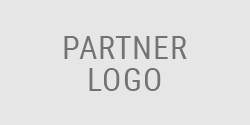Navigating Public Service Loan Forgiveness (PSLF): Eligibility, Requirements, and Benefits

The Public Service Loan Forgiveness (PSLF) program is a potential beacon of hope for borrowers seeking relief from student loan debt. However, navigating this program’s intricacies can be challenging. We’ll delve into PSLF eligibility, requirements, common pitfalls, and resources to help you successfully navigate public service loan forgiveness.
What is the Public Service Loan Forgiveness program?
PSLF is a federal initiative designed to forgive the remaining balance of student loans for borrowers who work full-time in public service jobs. By encouraging students to pursue careers in public service, PSLF aims to create a win-win situation: debt relief for borrowers and essential services for society.
Who qualifies for PSLF?
The most important PSLF qualification is that you must work full-time (30 hours or more a week) for a qualifying employer. This includes:
- Government organizations: Whether federal, state, local, or tribal, employment at government agencies at any level qualify.
- Tax-exempt nonprofit organizations: These include entities classified under Section 501©(3) of the Internal Revenue Code.
- Other nonprofit organizations: Certain nonprofits that provide specific public services in areas like public health, education, and safety.
Remember, it’s about your employer, not your specific job title. It doesn’t matter what your role in the organization is, just that you work for a qualifying employer in any paid capacity. Unpaid volunteer work doesn’t qualify.
You can use the PSLF Help Tool to verify that you work for a qualifying employer. If your employer isn’t in the database and you believe they should be, you can also submit a request through the Help Tool to have them added.
What are the payment requirements for PSLF?
You must make 120 qualifying monthly payments within the following guidelines:
- Payments must be made after October 1, 2007.
- Payment must have been for the full amount due as shown on the bill.
- Payments must be made no later than 15 days after the due date.
- You must be enrolled in an income-driven repayment (IDR) plan. These plans set monthly payments based on your income and family size, and they include Income-Based Repayment (IBR), Pay As You Earn (PAYE), Saving on a Valuable Education (SAVE) Plan, and Income-Contingent Repayment (ICR) plans.
Plans that do not qualify include: Standard Repayment Plan, Graduated Repayment Plan, and Extended Repayment Plan.
You must submit an Employment Certification Form (ECF) annually or when changing employers. We recommend keeping meticulous records of payments to ensure they align with PSLF requirements.
What about deferments?
There’s also good news if you’ve had to use certain deferment or forbearance options. As long as your employment remains certified (meaning you remained working full time for a qualified employer), time spent in the following programs can count toward your 120 qualifying payments:
- Cancer treatment deferment
- Economic hardship deferment
- Military service deferment
- Post-active-duty student deferment
- AmeriCorps forbearance
- National Guard Duty forbearance
- U.S. Department of Defense Student Loan Repayment Program forbearance
Special administrative forbearances related to local or national emergencies may also qualify. Thanks to the CARES Act this includes the recent national forbearance during the Covid-19 pandemic.
How do I apply for forgiveness through PSLF?
After 120 qualifying payments, you can use the PSLF Help Tool to prepare, review, and sign your PSLF application. You must still be employed by a qualifying employer when you apply for forgiveness.
Common PSLF mistakes and how to avoid them
While PSLF may seem fairly straightforward, like any government program it comes with some hoops to jump through. Miss one or more of these hoops and unfortunately you may not qualify for forgiveness. Here are some common mistakes to avoid.
- Assuming simplicity. PSLF requirements can be complex. Avoid underestimating the program’s intricacies.
- Not having eligible loan types. Only Direct Loans qualify (e.g., Direct Subsidized, Unsubsidized, PLUS, and Consolidation Loans). Loans from private lenders or the Federal Family Education Loan (FFEL) program do not.
- Not using an accepted repayment plan. Make sure that you’re on an eligible IDR plan.
- Not verifying that your employer qualifies. Always confirm that your employer qualifies for PSLF.
- Paying more than you need to. While paying extra on your student loans is generally good, it won’t accelerate your PSLF forgiveness.
What if I’m not eligible for PSLF?
While PSLF is a great program, it’s not one that everyone can access. Fortunately, even if you don’t qualify for PSLF, there may be other student loan repayment or forgiveness programs that work for you.
If you want to learn more about which programs are available and which would work best for you, MMI offers student loan counseling. Whether you’re looking for the lowest possible monthly payment, the fastest repayment, or the biggest total savings, we can help you find the perfect plan for your financial journey.
















